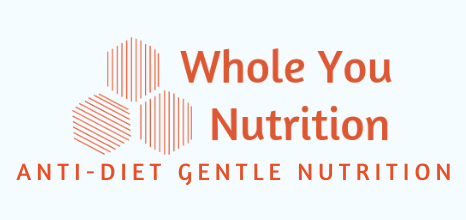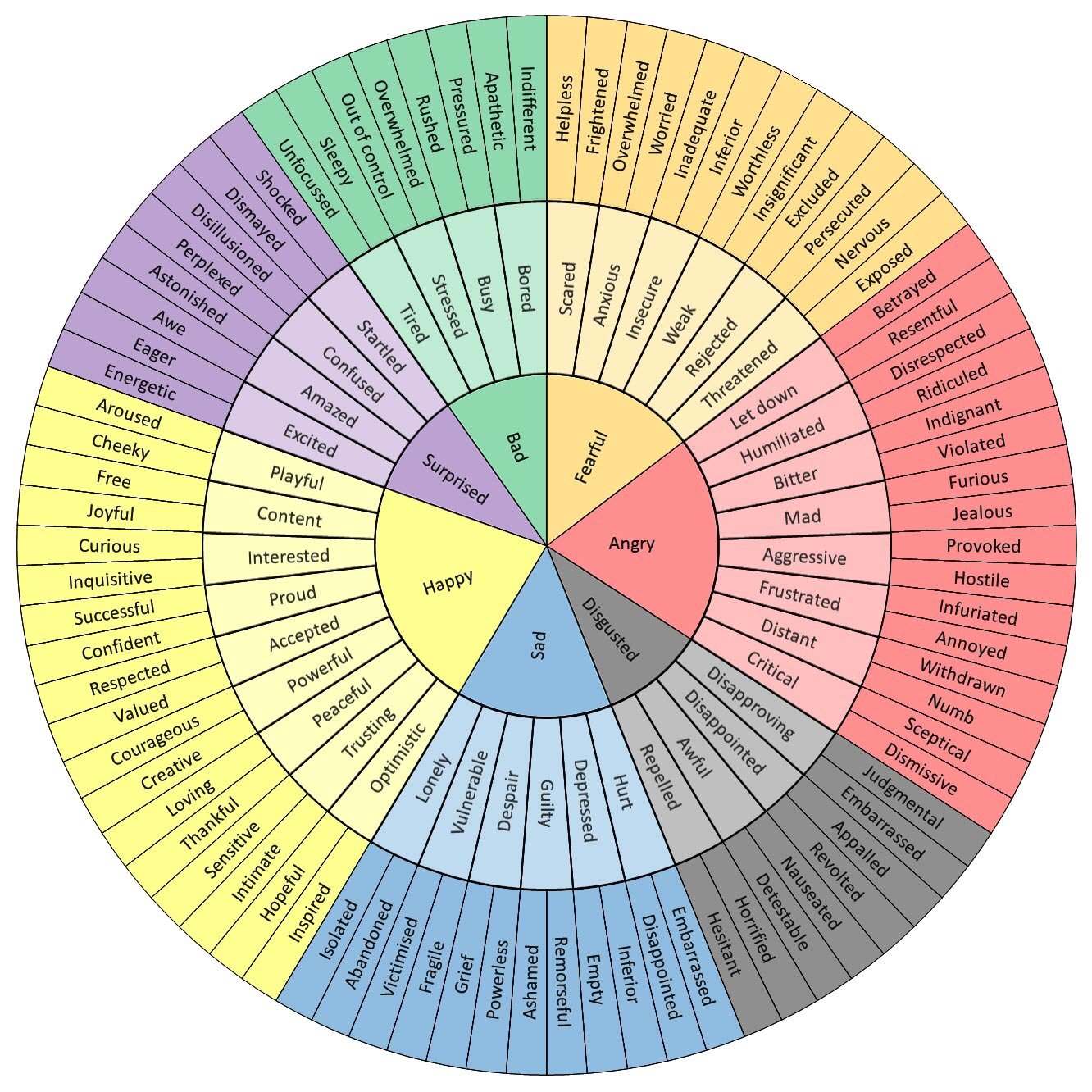How to Stop Emotional Eating
Emotional eating can be such a, well, emotional topic.
As a member of a generation marked by indifference and apathy, it is no wonder emotions have often felt like a foreign language to me. Beyond identifying the basics on Sesame Street (happy, sad, mad and scared) I don’t remember much talk about feelings, especially big feelings. It was still a time when “stop crying or I will give you something to cry about” was a common refrain.
Whether it was explicitly taught or simply observed and intuited, bottling up emotions was the norm of my childhood, teen, and early adult years.
Perhaps it was from the well-worn TV trope of eating ice cream after a break-up or by observing adults in my life, I learned food was one way to make uncomfortable or unpleasant emotions go away, at least for a little while. Food became my most used (sometimes only) tool to manage emotions that felt unmanageable.
After eating, when the guilt and shame of seeking comfort in food flooded in, it was always the food (not my lack of emotional coping skills), that was the target of my ire and frustration. Frequent looping thoughts of “I can’t be trusted around food,” “I have no willpower,” or “I am addicted to food” rang through my emotionally wrought head.
It took me decades to learn that emotional eating is not a problem with food.
What is Emotional Eating?
Emotional eating is when you eat, not because you are hungry, but because of an emotional drive like boredom, sadness, loneliness, or anger. Emotional eating can also happen related to positive feelings like joy, love, or excitement.
It is far more common for me to hear about problematic or distressing emotional eating episodes from clients when they occur in response to negative emotions. Managing unpleasant feelings with food tends to leave many people feeling even more negative emotions in the wake – often guilt, shame, or frustration.
Having an emotional connection to food and eating is an important part of a healthy relationship with food. Sharing food with others in times of celebration or loss is part of the social fabric.
Since eating is required for survival, feelings of pleasure, satisfaction, and comfort related to it are hardwired into humans to make eating a desirable activity. Many of us learn to use food to help soothe or distract ourselves from uncomfortable emotions because food is readily available and reliably provides, at least momentary, comfort and distraction.
It is also common to confuse emotional eating with actual hunger or for it to overlap with binge eating.
Understanding the Spectrum of Emotional Eating
Both the frequency and intensity of emotional eating need to be considered. This is because, at its core, emotional eating is a tool of self-regulation, not a problem. But over dependence on any single tool can become problematic.
Continuum of Emotional Eating, Adapt from Tribole and Resch (2020) Intuitive Eating 4th Ed.
Infrequent or short-term use of more intense types of emotional eating, like for sedation, might not be detrimental in the long-term - say that container of ice cream after a break-up.
On the flipside, frequent use of mild emotional eating, like for comfort, could be problematic. If your habit is to reach for chocolate every time you have to deal with an even mildly uncomfortable situation, it can make it harder to hear and respond to internal signals of hunger, fullness, and satisfaction.
It is often the frequency, more than the intensity, that can indicate the need to expand your emotional toolkit.
Emotional Eating Frequencies:
Mild/Occasional: Using food to celebrate a milestone or eating a favorite meal or food after a stressful day of work. This frequency provides the desired emotional impact without significant distress or lasting impact on well-being.
Moderate/Recurring: Using food more frequently to manage a wider range of emotions. After eating you may experience feelings of guilt and maybe some physical discomfort.
Significant/Distressful: Relying on food as primary mode to manage emotions and eating can feel out of control. This is often followed by profound feelings of shame and this frequency can negatively impact mental, physical, or emotional health in a lasting way.
Understanding where you currently fall on both frequency and intensity of emotional eating is a good first step to determine if you would benefit from a different approach to food and emotions and what that approach might be. Both moderate and significant frequencies could benefit from practices, tools, and/or support to create new default habits.
How to Deal with Emotional Eating
It is important to remember that an emotional connection to food is a normal part of a healthy relationship with food. Even as you adjust how you manage emotions and change your relationship with food, you will likely still eat emotionally at times. If you find the frequency of emotional eating is increasing or feeling unsustainable, that is a good clue that one or more of the following areas need more attention.
Honor Your Hunger
Being ravenously hungry can make any eating occasion feel intense and emotional. It can also make stereotypical comfort foods more appealing.
The body knows that foods high in sugar or simple carbohydrates are a great way to get quick energy. If it has been hours since your last meal, that bag of chips or bowl of candy takes on a whole new appeal. Throw in some salt or fat and there is a pleasure bump along with the energy bump.
If you have spent years ignoring your body’s hunger cues, it can take time to hear them again. But if you can tell when you need to go to the bathroom or when you are thirsty then, with practice, you can also learn to tell when you are hungry and when you are full.
As you are learning to listen to and trust those interoceptive signals from your body, it can be helpful to have an eating schedule (complete with reminders if you need them) and a flexible meal plan in place.
There are also different types of hunger – biological or physical hunger, taste hunger, practical hunger, and emotional hunger. Tuning in to the type of hunger can also provide great insight to support change.
Ditch Diet Culture and Make Peace with Food
Many of us internalized what and how to eat by deeply flawed diet culture. Regardless of your emotional state, it is likely that you feel guilty for eating most any food that diet culture has deemed “bad for you.”
Taking the time to unlearn the rules of diet culture and learn to see all food as morally neutral defuses those thoughts and feelings I mentioned in the intro – things like “I can’t be trusted around food” or “I am addicted to food.” When the food itself is no longer emotionally charged, emotional eating looks and feels different.
Feel Your Feelings
There is a nuanced vocabulary related to emotions. It is true most of the descriptive words stem from those more general “Sesame Street” feelings, but the subtle differences in meaning can make one word resonate while another falls flat.
Created by Geoffrey Roberts. Available at https://imgur.com/tCWChf6
When we are in an emotional spiral, being able to identify the feeling has been shown to reduce the intensity of the feeling which gives you space to consider what you might need in the moment. If a huge wheel of emotions feels overwhelming right now you can also keep it simple with describing what you feel as comfortable, uncomfortable, or neutral.
For the more tech minded, there is also an app for that. The How We Feel app is a great resource to help tap into your feelings. It was created by scientists and therapists as part of a non-profit project to help everyone and anyone better understand their emotions. Plus, it is free and doesn't contain any advertising.
You can set it up to prompt you a few times a day to check-in on how you are feeling in the moment. It offers a variety of descriptive words with definitions to help you figure out the subtleties of your personal emotional landscape.
In addition, it has great tools including 10 short videos called Emotions 101 that define and explain emotions. Just watching these videos is a great way to learn more about how you feel and some insight into why. Another favorite tool of mine in the app is the breathing exercises. They are simple to do, easy to follow, and quick to help.
With practice, the goal is to increase your tolerance to sit with and through uncomfortable feelings without the need to distract or numb yourself with food.
Try Gentle Distraction without Food
As you are working to get more comfortable with the language of emotions, it can feel pretty tough to simply sit with uncomfortable feelings. This is a great time to try other tools to help gently distract yourself:
Change your environment by going outside, taking a shower, or moving to a different room or space.
Increase physical comfort by changing clothes, putting your hair up or taking it down, adjusting the thermostat to make the room warmer or cooler, standing up or sitting down.
Reach out to a friend, family member, or trusted advisor.
Express yourself through journaling, art, or music.
Engage senses other than taste by smelling a scented candle, petting a cat, looking at photos of nature, or listening to a favorite podcast to name a just a few ideas.
Reflect on Emotional Eating Episodes
In the middle of out-of-control eating it can be hard to consider the contributing factors that led to that moment, but there is likely one or more things that contributed to an emotional or binge-eating episode. Taking time to reflect on what happened later in the day or the next day when the heightened emotion has waned but the details are still relatively fresh can offer great perspective on self-care habits that could use more attention or patterns that need disruption.
Consider the following:
What seemed to trigger the episode? Were you too hungry? Too stressed? Overscheduled? Too tired? Something else?
Did you have a need that wasn’t being meet like permission to take a break, say “no”, or set a boundary?
During eating, were you present and connected? Did you taste the food? Was there a point you realized the food no longer tasted good or your body was physically uncomfortable?
Are there things that could better support you in similar situations in the future like prioritizing regular meals or food satisfaction, getting enough sleep, saying “no, ” or taking a break? Anything else?
Seek Support to Deal with Emotional Eating
If emotions feel like a foreign language to you or that they hijack your best intentions, seek support from a licensed professional that specializes in disordered eating and is trained in Intuitive Eating.
I invite you to learn more about my one-on-one service to help you improve your relationship with food, embrace self-compassion, and expand your capacity to handle difficult emotions.
Remember, emotional eating isn’t bad and eating emotionally doesn’t make you a bad person.
You have found food to be an effective tool to help manage uncomfortable emotions. That is the wisdom of your body. The wisdom of your body also brought you here today. It is telling you that tool isn’t working anymore.
Changing your relationship with food, increasing your self-awareness, increasing your tolerance for discomfort, and diversifying your emotional toolkit are possible and doing so helps support your overall health and wellbeing.
The information provided is for educational and informational purposes only. It is not intended to be medical advice or to diagnosis, treat, cure or prevent any disease. This information does not replace a one-on-one relationship with a physician or healthcare professional. Dietary changes and/or the taking of nutritional supplements may have differing effects on individuals.
To learn more about how working with a nutritionist could help you, schedule a free 15-minute call.



